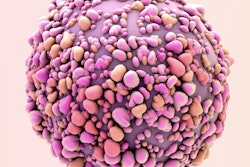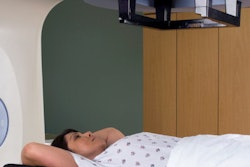
Women with large breasts who are undergoing radiotherapy for breast cancer should be treated while lying on their stomachs rather than on their backs, suggests Canadian research published May 26 in JAMA Oncology.
A team led by Dr. Danny Vesprini from the Sunnybrook Health Sciences Centre in Toronto found that treating women with large breasts in the prone position leads to less toxic effects on the skin, such as skin peeling. The group also found increased toxic effects when a radiotherapy boost and conventional fractionation are used.
"Hopefully this will motivate radiation centers to develop and offer postoperative breast radiotherapy in the prone position, which has not been universally adopted," Vesprini told AuntMinnie.com. "In addition, this will hopefully convince those jurisdictions that are still using the older five-week regimen to consider changing to the far more convenient and cost-effective three-week schedule."
Adjuvant breast radiotherapy is the standard of care for women who choose to have breast-conserving surgery. While improvements have been made in reducing exposure of normal tissue to radiation, only "relatively modest" improvements have been seen in breast radiotherapy.
The researchers wrote that women with large breast sizes have increased risk of radiation-related toxic effects. They added that reducing these effects is "of considerable importance" to improve quality of life since they are linked to late toxic effects in breast cancer patients.
Previous research suggests that treating women in the prone position leads to a more homogeneous dose distribution and less pain for women. So the Vesprini team wanted to find out if breast radiotherapy in the prone position reduces acute toxic effects of the skin compared with treatment in the supine position.
In their multicenter, single-blind randomized trial, the group looked at data from a total of 357 women with an average age of 61 years. Out of these, 182 were treated in the supine position and 175 in the prone position.
The study criteria included patients with early-stage breast cancer who had a large breast size, classified as bra band ≥ 40 inches and/or ≥ D cup, and who were referred for adjuvant radiation therapy to one of five comprehensive cancer centers in Canada.
The team found significantly more skin peeling, also known as desquamation, in women treated in the supine position (p = 0.002). Skin peeling was found in 72 of 182 women (39.6%) treated in this position, compared with 47 of 175 women (26.9%) in the prone position, with an odds ratio (OR) of 1.78.
The researchers also confirmed this on multivariable analysis, along with other independent factors. These included the use of boost (OR, 2.71), extended fractionation (OR, 2.85), and bra size (OR, 2.56). All factors were found to be statistically significant.
However, differences in quality of life six to eight weeks after radiotherapy were not seen, despite the difference in skin peeling between both cohorts.
"Quality of life was found to initially decrease from baseline to end of treatment as measured by the global health status and pain scales, but then returned to a level that was not statistically significantly different from baseline in both arms," the authors wrote.
They also found that a shorter course of radiation over three weeks had significantly less skin toxicity than the standard five-week treatment that is still used in some places around the world.
Vesprini told AuntMinnie.com that the team will try to determine what physics- and radiation-related factors contribute to the improvement in toxicity seen in the prone position. He added that follow-up study is needed to find out if this leads to a decrease in long-term side effects such as breast pain and cosmetic outcomes.




















